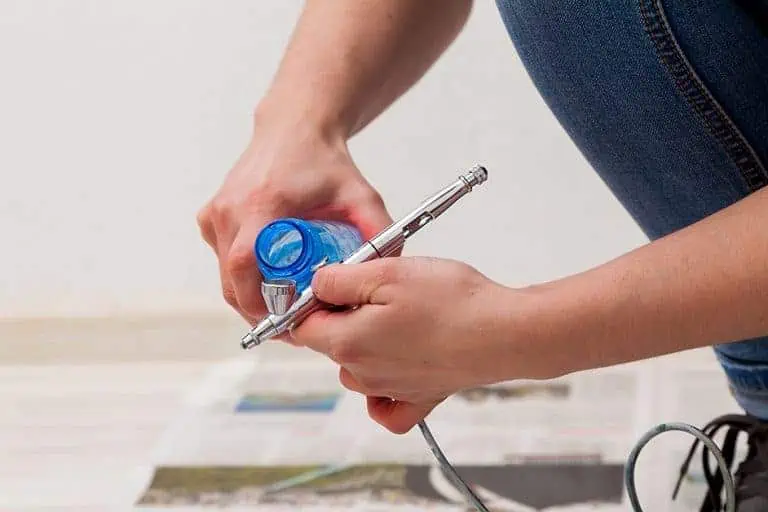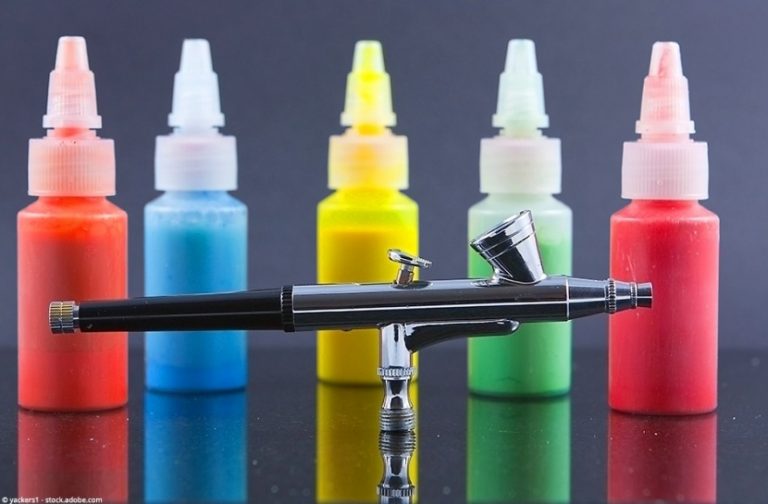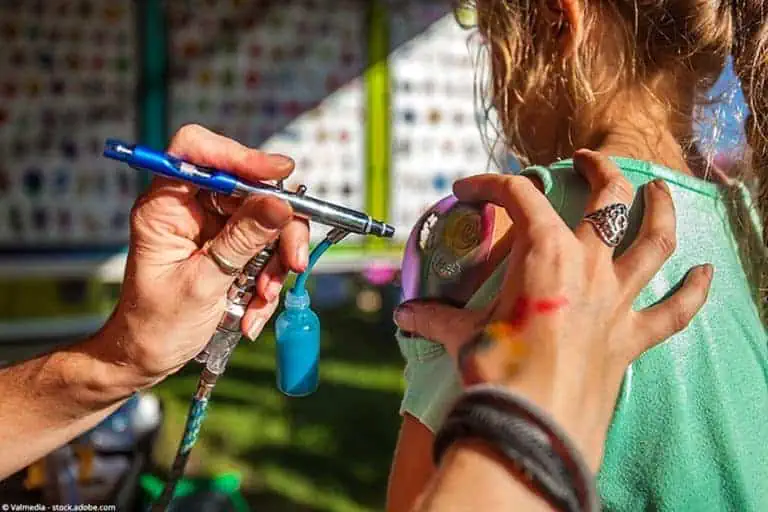Enamel Airbrush Paint – How to thin Enamel Paint for Airbrush
This post may contain affiliate links. We may earn a small commission from purchases made through them, at no additional cost to you.
All enamel paints are recognized for their glossy finish and durability. The question is can you use enamel paint with an airbrush? Enamel paints have been on the market for many years and in that time have seen significant improvements. Below you will discover how to use enamel paint with your airbrush.
Table of Contents
Can you Airbrush using Enamel Paint?
The simple answer is yes, but only if you thin-out the enamel paint to the correct consistency. You also have to take into account the correct type of thinners. Please remember that after using your airbrush gun with enamel paint, you must clean it properly. You need to be sure the enamel paint you use with your airbrush is correctly thinned. If you don’t, the airbrush will clog up and you will finish up with uneven spray patterns and possibly other problems.
- Testors solvent-based paints are extremely durable for any indoor or outdoor project
- Includes 3 paint brushes to start your projects off right
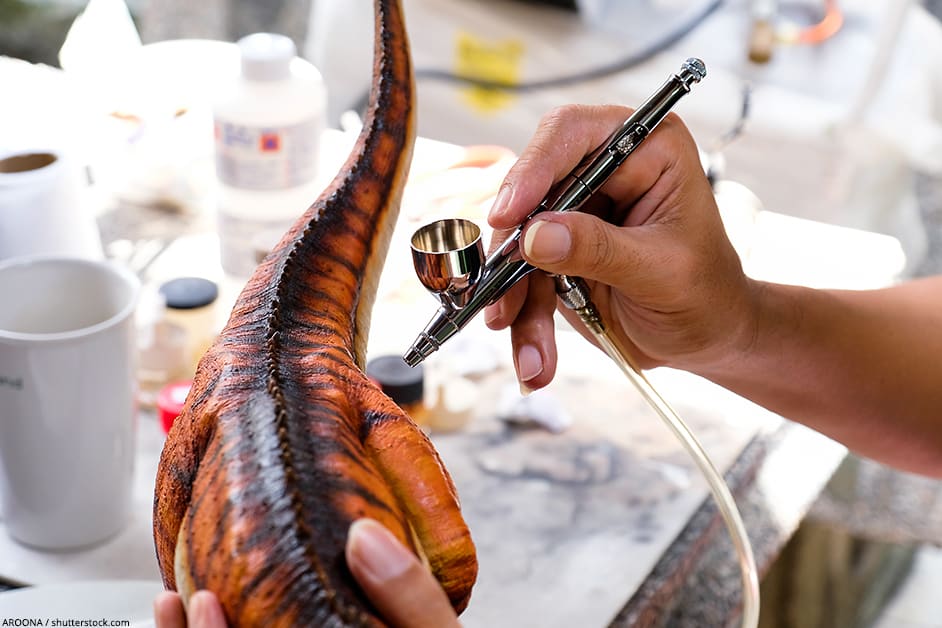
The Reason for thinning your Enamel Paint
Enamel paint is a name or term used to describe its finish as glossy and durable. In other words, the finish you achieve when using enamel paint is hard and shiny when it has dried. To achieve this result, it is specially manufactured with certain elements or components. When it is not thinned correctly to the right texture, it can result in clogging your airbrush or other problems.
- Thinners are great for thinning enamel paint and they also make a good brush cleaner
- Use to Thin any of Testor Enamel Paints or Clean Brushes
- Manufactured in United States
You should also take into consideration that all manufacturers of enamel paints differ when it comes to the paint’s viscosity. Most of these paints will need you to thin your paint before you use it in your airbrush.
The main reason for thinning enamel airbrush paint is to provide you with a spray that is smooth and consistent. Experience has proven that to obtain a smooth spray, you need to thin it until the viscosity becomes like that of milk. This will allow you to spray with a minimum amount of problems. However, it is recommended thinning your enamel paint according to the pattern you want and to take into consideration the requirements for your particular type of airbrush.
We highly recommend that before you start spraying, you first test your equipment. You can do this by spraying on an old used piece of material. You can mix the paint in any container but mixing in small cups is best.
https://www.youtube.com/watch?v=MpqiQBAqQ6k
Cleaning your Airbrush
You need to clean your airbrush directly after you have finished spraying, irrespective of what type of paint you may have used. However, with the use of enamel paint, you must clean your airbrush immediately after spraying.
When you make use of different paints in your airbrush, all of them may have different results when left to dry and harden in your airbrush. However, with enamel paints, this is not the case, as they are purposely designed to give you that hard durable finish.
Experience has taught us that any paint that has been left to harden in your airbrush will prove to be difficult to clean. When it comes to enamel paint, which has been designed for its durability, it is virtually impossible to remove from your airbrush if left to harden.
So, it is safe to say that if you have left enamel paint to harden in your airbrush, the only course of action would be for you to discard it. However, if it is not too late you may be able to still save it. The thing is, be sure your airbrush is thoroughly cleaned after each use and make sure you use the correct cleaning products when you. You don’t want to have to throw out an otherwise perfectly good airbrush.
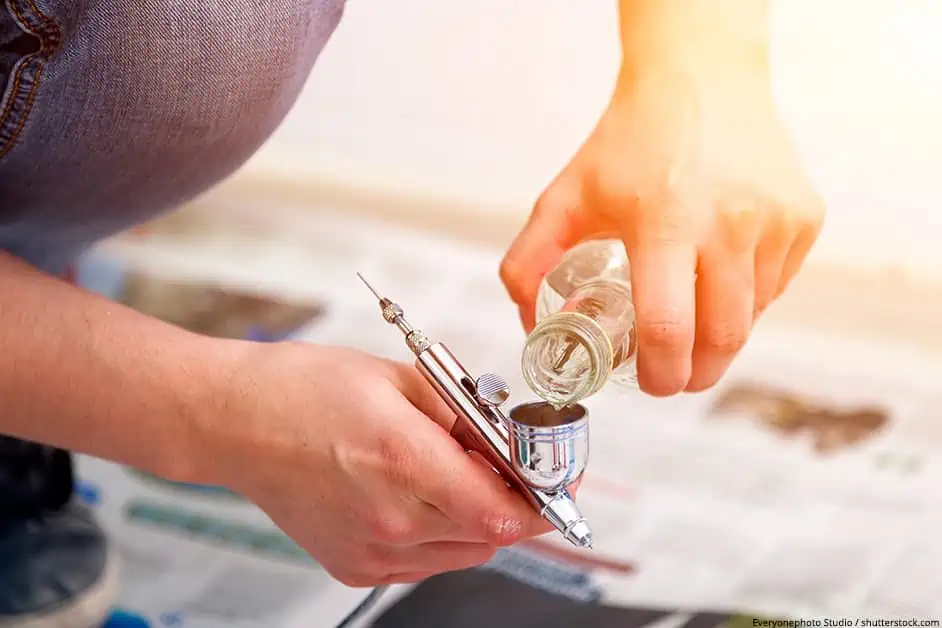
Enamel Paints and Protective Gear
When airbrushing with enamel paint, we recommend you work in a well-ventilated area. Also, you should wear a respirator that is approved for paintwork. This is important as the solvents used to manufacture the paints can prove to be toxic. Make sure you follow the proper safety precautions when you airbrush with enamel paints, as you do not want to expose yourself to the toxic fumes and endanger your health.
This should not only be the case when airbrushing with enamel paints, but you should wear your protective gear when spraying with any type of paint. However, when spraying with enamel paints it is essential to be properly protected.
Recommended list of safety equipment to use when airbrushing:
- Respirator: When airbrushing with enamel paint it is recommended that you use the correct type of respirator, which is a painters airbrush respirator or airbrush mask. A cloth surgical mask or dust masks are not recommended.
- Gloves: Rubber gloves are recommended but the use of latex disposal gloves is also acceptable.
- Outerwear: To protect your clothing, it is recommended you wear cotton overalls, coat, or apron.
- Goggles: Use protective goggles that can also be worn over ordinary spectacles.
Conclusion
As you can see, you can use enamel paints when airbrushing. However, it is important that you thin-out your paint to the correct consistency before you start spraying. If your paint is too thick, you can clog up your airbrush. On the other hand, if it is too thin, you will find your paint running off the area you are busy with.
Remember, when you thin-out your enamel paint, make sure you use the right paint thinner. The thinner should be recommended by the manufacture for that particular type of paint.
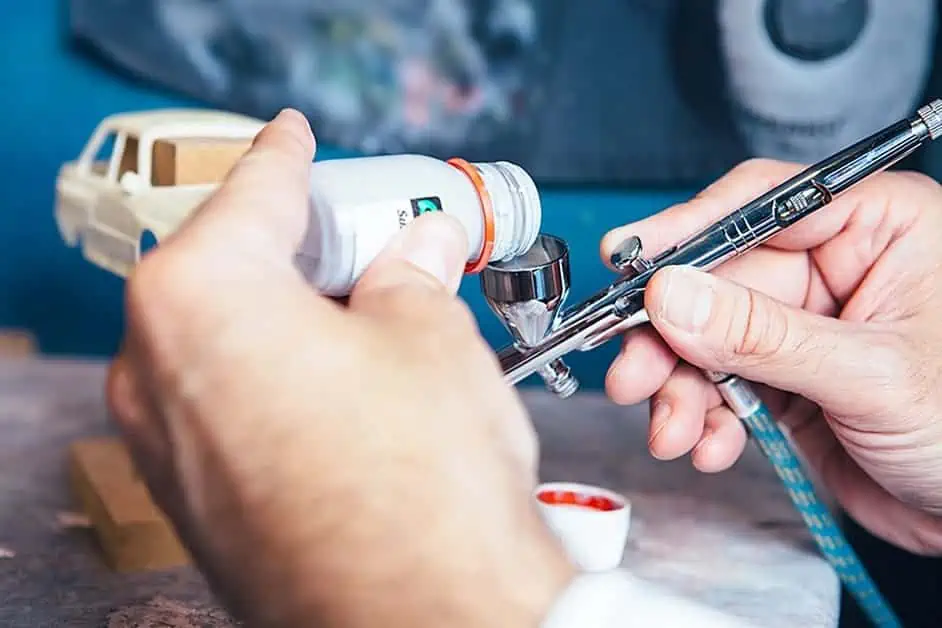
In 2005, Charlene completed her wellness degrees in therapeutic aromatherapy and reflexology at the International School of Reflexology and Meridian Therapy. She worked for a company offering corporate wellness programs for several years before opening her own therapy practice. In 2015, she was asked by a digital marketer friend to join her company as a content creator, and it was here that she discovered her enthusiasm for writing. Since entering the world of content creation, she has gained a lot of experience over the years writing about various topics such as beauty, health, wellness, travel, crafting, and much more. Due to various circumstances, she had to give up her therapy practice and now works as a freelance writer. Since she is a very creative person and as a balance to writing likes to be active in various areas of art and crafts, the activity at acrylgiessen.com is perfect for her to contribute their knowledge and experience in various creative topics.
Learn more about Charlene Lewis and about us.




